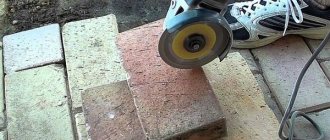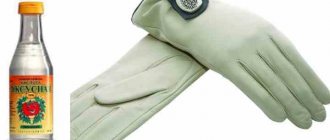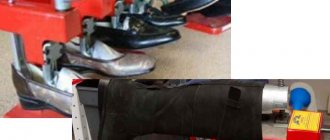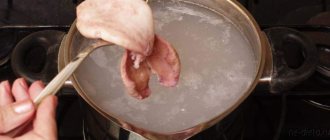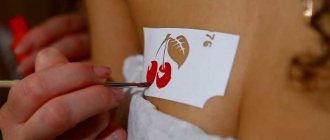Before cutting carpet, you need to choose the right tool. To avoid damaging the pile during cutting, it is recommended to use special devices when laying. The following tools are suitable for carpeted floors:
- electric scissors;
- cutters for textile flooring materials;
- special knives.
Important! If for some reason it is not possible to use one of these tools, then you can try cutting the carpet with a shoemaker, an ordinary stationery knife, a scalpel, or even simple scissors. But the result is unlikely to be satisfactory.
Electric scissors
Electric scissors (electric knife) are a universal tool with replaceable attachments. Its purpose is to cut various flexible materials:
- paper;
- cardboard;
- fabrics;
- carpets and rugs, etc.
Buying electric scissors will be the smartest decision. They will quickly and easily solve the problem of cutting a carpet, and after completing the repair they will help solve a wide variety of problems many times. The electric knife has an affordable price (up to 2000 rubles). It is safe, simple and easy to use, compact in size. The device is powered not from the mains, but from a replaceable battery.
Electric scissors
Cutters
The next type of device suitable for cutting carpet in a straight line is special cutters. There are several types of them, the classification is carried out according to the type of carpet to which they are suitable:
- Universal cutter for carpet and linoleum. The blade has a trapezoid shape and is designed in such a way that the pile does not fall under it when cutting.
- Universal cutter for textile coverings. Purpose: cutting carpet, PVC and foam-based materials.
- Cutter for jute-based flooring materials. They can also cut PVC, but it is absolutely unsuitable for foam bases.
The cost of a cutter, depending on its type, is from 1500 to 3000 rubles. Many types are equipped with a set of replaceable blades.
Cutters
Thread selection
Only threads made of 100% polypropylene are suitable for processing carpet.
Only threads made of 100% polypropylene are suitable for processing carpet. Due to the fact that the threads are made from artificial material, their high strength and wear resistance are ensured. They can be used with any type of overlocker.
Polypropylene threads have other advantages:
- In terms of strength, they are many times superior to natural-based products.
- Polypropylene threads are highly resistant to various acids and solvents.
- A large range of colors makes it easy to choose a finish to match the color of the coating.
- Such threads are not afraid of even sub-zero temperatures; they do not crumble or break.
The only drawback is that the threads quickly fade in direct sunlight. Typically, processing is carried out after the carpet has been given the desired shape and dimensions. Then the edges are processed with polypropylene threads. Sometimes nylon threads are added to them to increase the strength of the seam and enhance the brightness. The seam density should be high.
Knives
The simplest type of tool for cutting carpet is a special knife. In the assortment of construction stores you can find two types:
- A simple knife with a blade 18 mm wide. Outwardly, it looks like a regular construction or stationery one, but has a special shape of the front part, a guide and a plastic handle with a protrusion. Due to this shape, correct deep cuts are made. The handle is convenient for inserting material under the fixing elements. The blade is break-off, segmented. The price of the device is from 1100 rubles.
- Knife with stop for carpet, vinyl and PVC. Using the stand, you can easily make a cut with a width of 15 to 60 mm. Cost – from 750 rub.
Knives
What is best to use for cutting carpet?
In order for the flooring to lie flat, it must first be cut correctly. Trimming should only be done with special tools; let’s look at each of them.
Carpet knife
In everyday life it is necessary to have a cutting tool such as a knife. It is perfect for cutting flooring, opening boxes, etc. There are many models of this tool, and you can purchase it for a price starting from 300 rubles.
Electric scissors
This universal tool is specially designed for cutting carpet and linoleum. Its cost is 1000 rubles, at least. Unlike an ordinary knife, electric scissors have the following properties:
- safety when working with flooring material;
- ease of operation and high quality of work;
- compactness;
- ergonomic design;
- This tool runs on rechargeable batteries, which allows you to not depend on the mains.
Other tools
Of course, you can use scissors or an ordinary sharp knife, but you should only take into account the fact that carpet comes in different thicknesses and may not lend itself to these tools. Also, when cutting the flooring, use a shoe knife, a stationery knife with replaceable blades, or a scalpel.
The choice of cutting tool will depend, of course, on the preferences of the owner, but the consequences can also be different, because unevenness can ruin the blade.
CAUTION Do not cut too much of the carpet at the edges.
How to cut carpet at home
In order to cut carpet at home, you should first take clear measurements, and then carefully and carefully trim off the excess material. In order for the carpet to be well laid on the floor surface, you need to take it by the edge and squeeze it between your legs, performing kicks with one foot. Then pull the material to the desired location so that the carpet lies tightly on the floor. The overlap on the walls should not exceed 5 centimeters; the excess is then cut off.
There are several steps to perform circumcision. First of all, spread the carpet on the floor and make markings on the underside of the floor covering.
To cut carpet correctly, you must adhere to the following recommendations:
- It is necessary to cut the floor covering along the base of the threads, from the wrong side.
- The marking of the perimeter of the room should first be transferred to the carpet.
- For an accurate fit, leave a margin of about 10 centimeters. You can always trim off the excess.
- Carpets with loop pile must be trimmed very carefully, otherwise the fabric may unravel.
- lay the material with the wrong side up and, using a meter ruler, draw out the corresponding dimensions of the perimeter of the room;
- using a cutting tool, cut off excess pieces of flooring;
- lay the carpet on the floor according to the markings.
Complex pattern
Sometimes buyers ask to make a complex pattern in order to get around obstacles, protrusions, etc. This is the least successful solution, despite its apparent convenience. A person believes that he will simply take an already cut piece, put it on the floor and frame it with a plinth. But in practice this does not work out that way.
As already mentioned, it is very difficult to take accurate measurements and then transfer them to such a non-rigid material as carpet. But, nevertheless, such tasks arise, so we decided, after all, to give some recommendations on how best to do this.
Firstly , if you want to make a recess on a straight line, for example, to go around a standing cabinet or there are some architectural elements protruding from the wall in the room, measurements should always be taken only at shorter distances. The magnitude of the error directly depends on the absolute value of the parameter, or, to put it simply, the greater the distance you measure, the greater the error.
The correct measurement technique is shown in the figure.
Secondly , it is better to indicate dimensions in the same units of measurement. For example, centimeters or millimeters. It would be good if somewhere on the drawing it is indicated in which units of measurement the drawing was made. It is extremely inconvenient to receive a drawing on which 50x10 is indicated and the manager was also verbally told that 50 centimeters by 10 meters.
As mentioned above, when cutting carpet, an error of 1%-2% of the size is allowed, therefore, reading the drawings, which indicate dimensions of 300.245 x 235.67, is a little strange. We will not be able to provide such high accuracy.
Thirdly , you should always try to make an allowance to the side where you can remove excess material, observing the rule - more is not less. Those. if you round the internal dimensions down, the opening may turn out to be smaller than necessary, the edges will creep, but this is not a problem, they can be aligned in place, but if they turn out to be larger and a gap remains, there will be nothing to fill it with.
Trimming carpet to fit baseboards
To cut the flooring under the baseboard, you need to lay the carpet along the longest wall in the room, end-to-end without overlap.
IMPORTANT! Before you get ready to adjust the carpet to the size of the room, it is recommended to lay it out and let it rest for about 2 days. During this time, all irregularities and bumps will be smoothed out.
The material should be smoothed out well, eliminating all irregularities and waves; you can even press down some places with a load. Then fit the canvas along the other three walls and, using a cutting tool, carefully make a puncture at the junction of the wall and the floor, moving from bottom to top.
After making the cut, you can mark points to cut off excess material along the walls. Next, carefully pressing the floor covering to the floor, we cut off the excess, while checking the correctness of the measurements every 10 cm.
In doorways, carpet trimming is done in a similar way.
The distinctive features of a carpet or rug from a finished carpet are that:
- the palace does not have a completely finished ornament or design,
- manufactured and sold in rolls,
- when sold, measured by linear footage,
- has a raw edge.
These properties allow the carpet to be laid evenly over the entire area of the room. If it is necessary to cover only a certain part of the room with the material, then it becomes necessary to process the edges of the carpet, since the cut edges look extremely unaesthetic and over time begin to flake and become shiny.
Loop stitch
Another option is to sew the rug with a buttonhole stitch. Since a standard home sewing machine cannot handle the rug, you will have to sew it by hand. Choose strong, thick threads or thin lace for processing, because the floor covering is something that is subject to quite intense wear.
You can choose threads to match the coating, which will be almost invisible. Or, on the contrary, you can use a contrasting color or a color that will resonate with the details of your interior or the pattern of the flooring. It depends on your imagination and taste. You can combine several colors, use textured laces, or group stitches to form a specific pattern.
Processing the edge yourself at home
Do you need to treat the carpet yourself? What's the best way to do this at home?
It is easy to process the floor covering if you have basic cutting and sewing skills. Can be worked with a simple buttonhole stitch. In this case it is necessary:
- Trim uneven and shiny edges;
- Prepare several skeins of durable and high-quality threads (preferably synthetic), which should be chosen to match the color of the carpet or, conversely, in contrast;
- Take a large, sharp, thin needle and use it to overcast the edges of the covering with an “over the edge” seam using a simple buttonhole stitch. At the same time, without tucking or bending anything.
Also, instead of thread, you can use a thin cord, which gives special reliability and wear resistance to the edges of natural carpet; you just need to choose a color in combination with the rug.
A buttonhole stitch, when processed with cord, should be performed at even intervals, or more often, laying stitches at a certain distance. Such a cord not only makes the edges of the covering strong, but also gives them a complete decorative look.
When processing the edges of the carpet, you can also use a special tape. To do this, select a narrow, preferably synthetic (since it is more durable) tape, which will match the color of the floor covering. Or you can again hide the edge using fasteners for the baseboard.
How to cut thick carpet. Steps
1
Select the rug you will use to make your rug. If you want to make a rug with a pattern, select the shades that you will use.
2
Cut a piece of rug for the background by placing the rug on corrugated cardboard or other surface that cannot be damaged by cutting with a blade. Use a knife with a blade to cut a small rug, press firmly. You may have to swipe the knife twice.
- The rug used for the pattern should be the same type and texture as the background rug.
3
Make a template of the shapes used to create the drawing on paper. Brown paper bags or tissue paper work great for this.
4
Place the templates on the backs of the corresponding carpet pieces and trace the outline of each piece with a marker pen.
5
Rotate the carpet to make a cut on corrugated cardboard or other surface. Cut out the shapes using a knife with a blade, pressing it firmly. You may have to swipe the knife twice.
7
Place the mat face down on the corrugated cardboard and lay out the pattern template. Trace it with a felt-tip marker.
9
Remove the cut areas of the rug and replace them with the previously cut pieces. Work from the back of the rug, pressing the cut pieces into place.
- You will likely be left with a lot of carpet lint showing on the underside of the rug. They can be pushed into the carpet by taking a flathead screwdriver and running it along the edges where the rug pieces meet.
11
Cut a piece long enough to extend around the entire perimeter of the rug. Apply a line of carpet glue along the edges of the carpet and create a 1/2 inch border.
13
Turn the carpet right side up and apply a bead of carpet adhesive in the corners and about 1/2 inch at the top of the carpet. Pull the edging up the edge of the rug and onto the bead of glue on top and press firmly.
Natural carpet: simple edge processing
If the aesthetic side of the issue is not so important to you, you can carry out the treatment using simple improvised means. Thus, the following is carried out:
- Treating carpets and coverings using matches or a lighter. In this case, only the shiny edges are simply singed. This treatment should be carried out with extreme care so as not to burn the floor covering. But this method is more applicable to synthetics. In addition, you need to use it very carefully, as you can easily burn part of the carpet.
- Processing natural carpet using transparent PVA glue or latex mastic. But this method is more suitable for carpets with large pile, since there will be no noticeable traces of glue in it.
Cover the edge with a plinth
If the carpet in your room will lie adjacent to the walls, then the best way to cover its edges is to hide them under the baseboard. To do this, you need to cut the covering with a sharp knife or scissors exactly along the edge of the room and secure it with a plinth. There are two types of skirting boards for these purposes: simple and special skirting boards for carpeting.
When using a simple baseboard, the coating is applied directly under it. And when using a special plinth, a narrow strip is cut from the main piece of carpet, which is glued to this special plinth; the strip of carpet is covered with a decorative strip on top.
Work execution technology
For those who don’t know, we suggest mastering the simplest seam – “manual overlock”. We fasten the thread.
- We retreat from the edge by 0.7-1.5 cm (the thicker the carpet, the larger the indentation) and stick the needle into the carpet.
- Thread the thread onto the needle, pull it to the left and tighten.
- We stick a needle into the same puncture, then put a thread on it and pull it to the right, tighten it.
- Having retreated 0.7-1.5 cm from the first puncture, stick a needle and throw a thread on it.
- Holding the corner of the previous loop, pull the thread to the left and tighten.
- We stick the needle into the same puncture, throw a thread over it, pull it to the right and tighten it.
Carpet edge processing by specialists.
When purchasing a carpet, all buyers are offered to process the edges using special equipment, on which the operation of overlaying the edge will take several minutes, the quality of the work will be performed at a high level and the price for such services is quite affordable. Also, at the request of the customer, specialists using a special knife will give any shape to the product, taking into account all the necessary dimensions.
If you live in the city and want your carpet to have a good aesthetic appearance, you can organize treatment of your carpet before installing the baseboard at home by calling a specialist to your home. There are special companies that provide these types of services at home. The craftsmen have all the necessary materials, they will perform their work efficiently using special equipment, in a short time, and all this at a minimal price.


